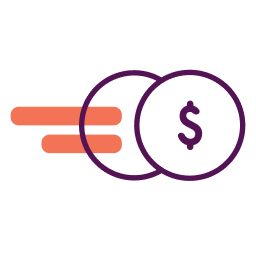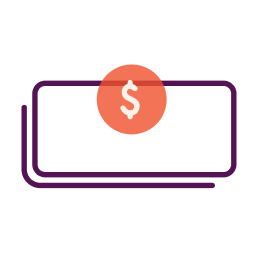There’s no such thing as SBA loans for women, as the U.S. Small Business Administration (SBA) makes its loan available to all business owners who qualify.
However, there are some excellent resources available to female business owners, and an SBA loan may still be the best fit for your small business. If you’re looking for a way to fund your business growth, here’s everything you need to know about your options.
SBA loan options
While there aren’t any SBA loans for women only, there are three main SBA loan programs from which you can choose. In every case, the SBA itself doesn’t provide the loan funds. Instead, private lenders originate the loan, and the agency guarantees a portion of it, which reduces the risk to the lender.
Because of this arrangement, SBA loans typically carry lower interest rates than traditional commercial loans, and they may also be more accessible to some business owners, as long as you meet the eligibility requirements.
Here’s a quick summary of each loan program.
SBA 7a loan
The SBA 7a loan program is the government agency’s most popular one, primarily because of its flexibility. You can use funds from an SBA 7a loan to provide access to working capital, acquire another business, purchase assets, make leasehold improvements and much more.
Related Do You Qualify for the $367 Billion in SBA Loans for COVID-19?
The process of applying and getting approved for an SBA 7a loan can take months, but if you apply for an SBA Express Loan — which falls under the SBA 7a loan program — you’ll receive a response within 36 hours.
Just because you can get your funding faster, though, it may be better for some business owners to wait — SBA 7a loans have a maximum of $5 million, and SBA Express loans are capped at $350,000.
SBA 7a loans have both fixed and variable interest rates, which are subject to maximums set by the SBA. Depending on how you’re planning to use the funds, loan terms can range from seven to 25 years.
There are several requirements a business must meet to qualify for an SBA 7a loan (check SBA.gov for a full list), including:
- Must be for-profit.
- Must be located in and do business within the U.S.
- Can’t be an ineligible business (a full list of ineligible businesses is available on the SBA website)
- Must have a feasible business plan
- Must have a satisfactory FICO SBSS score
- Can’t have access to alternative funds from other sources
You may also need to have at least two years in business, a decent personal credit score and other qualifications.
SBA 504 loan
If you’re looking for real estate-related financing, an SBA 504 loan may be a better fit for you. The loan program allows you to use funds to purchase land or existing buildings, make improvements to existing facilities and purchase ground-up construction commercial real estate. You can also use it to purchase equipment.
You can borrow as much as $5 million with this loan, though the maximum for you will depend on your project size. Interest rates are generally fixed, so you don’t have to worry about yours fluctuating with market rates.
Depending on how much you borrow and the terms of the loan, you may have 10 or 20 years to repay the debt. To qualify for an SBA 504 loan, you’ll need to meet several requirements, including but not limited to:
- Must be for-profit.
- Must be located in and do business within the U.S.
- Can’t be an ineligible business (a full list of ineligible businesses is available on the SBA website)
- Must have a feasible business plan
- Can’t have access to alternative funds from other sources
You may also need to have at least two years in business and a decent personal credit score, meet certain requirements for owner-occupation and satisfy other stipulations.
Learn about the difference between COVID Disaster Loans Vs. Paycheck Protection Loans
SBA Microloan
As the name suggests, SBA Microloans are designed for business owners with smaller financing needs. The maximum is $50,000, though the average is $13,000, according to the SBA.
You can use loan funds to get access to working capital or purchase equipment, machinery, inventory and supplies. You can’t, however, use an SBA Microloan to refinance or pay existing debt or purchase commercial real estate.
SBA Microloans may also be a good choice if your business is in the startup phase, though you’ll still need to meet the requirements set by the lender offering the loan. Lenders typically consist of nonprofit, community-based organizations instead of private banks and credit unions.
SBA Microloans typically have a repayment term of six years or less, and also charge higher interest rates than the other two SBA loan programs — you can generally expect a rate between 8% and 13%.
The SBA doesn’t guarantee its Microloan program, so you’ll need to meet the requirements from the individual lender, which can vary. However, you’ll typically need to have a for-profit business, and you may need to participate in a training or development program.
Other great resources for women entrepreneurs
If you’re a woman in small business, there are several opportunities to get the help you need to start and expand your business. Here are some of the top options.
SBA 8a Business Development Program
The SBA 8a Business Development Program is designed primarily to provide assistance to small disadvantaged businesses — specifically small businesses owned and controlled at least 51% by socially and economically disadvantaged people.
According to the Small Business Act, that includes African-Americans, Hispanic Americans, Asian Pacific Americans, Native Americans (American Indians, Eskimos, Aleuts, or Native Hawaiians), and Subcontinent Asian Americans. However, you may be able to join if you don’t belong to one of these groups if you can show through a “preponderance of evidence” that you’re socially and economically disadvantaged.
The program provides several resources, including access to mentoring, counseling, training, financial assistance, surety bonding and more.
Once you join the program, it typically lasts for nine years, including a four-year developmental stage and a five-year transition stage. SBA district offices will help you monitor and track your goals through annual reviews, business planning and systematic evaluations.
To be eligible for the program (beyond what we’ve already covered), you must be in business for at least two years and have a small business according to the SBA’s size standards.
The Office of Women’s Business Ownership
Created by the SBA, the Office of Women’s Business Ownership provides several programs and resources to women entrepreneurs. These programs, which include business training, counseling, federal contracts and access to credit and capital, are designed to help level the playing field for women who face unique obstacles in the small business world.
The office oversees several women business centers around the country.
The U.S. Women’s Chamber of Commerce
The U.S. Women’s Chamber of Commerce is an independent organization with hundreds of thousands of members across the nation.
The organization works to help women start and build successful businesses and careers, gain access to government contracts, grow as leaders and more. It also lobbies to advance government policies that support women’s economic priorities.
In fact, the U.S. Women’s Chamber of Commerce sued the SBA in 2005 (and won) because the agency had failed to implement a law passed in 2000 that provided a targeted set-aside program for women-owned businesses seeking federal contracts.
Membership in the organization starts at $0 but can be as high as $395 per year, depending on the benefits you want to receive.
Other great ways to fund your business
In general, the SBA may not provide financing to your small business if you have access to other financing options. Depending on your situation, those options include business credit cards, vendor financing and business loans from online lenders.
Business credit cards
Whether you’re brand new in business or you’ve owned your own company for a while, business credit cards can provide valuable access to ongoing capital via a revolving line of credit.
Business credit cards can be an excellent fit if you don’t have any prior experience or have yet to build a business credit history. They also can provide more than just access to capital — many business credit cards also offer rewards on every purchase you make and select expense management tools.
Some cards even offer introductory 0% APR promotions, which can come in handy if you need to make a large purchase and want to pay it off over time.
While business credit cards don’t require a business credit history, however, they do require a personal credit check. You’ll also need to provide a personal guarantee, which means that if your business can’t repay the debt incurred on the card, you’ll be legally required to pay it off with your personal assets.
If you’re considering a business credit card, be sure to compare several options to make sure you get the right fit for your small business.
Vendor financing
Vendor financing, also called supplier financing, is a common way to get capital as a small business owner. In fact, some vendors may already have it baked into their contracts.
With vendor financing, you create an agreement where you don’t have to provide cash payment upon delivery of the goods or services you’re receiving. Instead, you’ll have 30 (net-30), 45 (net-45) or even more days to pay off the invoice.
In many cases, there’s no interest involved with vendor financing, making it an excellent way to manage your cash flow and take advantage of the extra time you have with your funds. In some cases, you may even get a discount if you pay off the balance early, which can be beneficial if you don’t need the cash for other purposes.
Because vendor financing is an agreement between you and your suppliers, the terms can vary from company to company. Talk with your vendors about creating an agreement. Also, check to see if they report your payments to the business credit bureaus. If they do, the relationship could help you build your business credit history.
Online business loans
There are several online business lenders that can provide short-, mid- or long-term capital to your small business. Depending on your needs, you can typically choose between an installment loan with a lump-sum disbursement and regular monthly payments and a revolving credit line that you can use, pay off and use again.
Examples of online business lenders to consider like Online Lenders. These and other online lenders typically have less stringent eligibility requirements than traditional bank loans and SBA loans. That includes less time in business, lower revenue and credit score standards, and more.
That said, they also typically carry higher interest rates, so you’ll need to be careful when shopping around. Also, some lenders have short repayment terms, which can work against you if you need more than six to 12 months to achieve your goals.
If you’re considering an online business loan, make sure to read all of the fine print to know what you’re getting.
The bottom line
If you’re a woman in small business, you may have some unique challenges that your male counterparts don’t have to deal with. While there are no SBA loans for women, the government agency provides some programs to help women entrepreneurs achieve their goals.
If you’re looking to get financing for your business, however, it’s important to consider all of your options. In addition to SBA loans, also consider business credit cards, vendor financing, online and other business loans and more to get the capital you need to grow your business. And if you’re a veteran, there are other business loan options to consider as well.
Also, take advantage of the programs and resources provided by the SBA 8a Business Development Program, Office of Women’s Business Ownership and U.S. Women’s Chamber of Commerce.
Related Resources:
- Prepare Your Application for the SBA Paycheck Protection Program
- Applied for an SBA Disaster Loan? You Need to Monitor Your Credit ASAP
- Applying for a Business Loan Is Changing Due to COVID-19: Here’s What It Means
- Avoid Small Business Lending Scams and Fraud Related to COVID-19
- What is the Economic Injury Disaster Loan Grant and What Does It Mean for Small Business?
This article was originally written on January 14, 2020 and updated on February 5, 2024.





Have at it! We'd love to hear from you and encourage a lively discussion among our users. Please help us keep our site clean and protect yourself. Refrain from posting overtly promotional content, and avoid disclosing personal information such as bank account or phone numbers.
Reviews Disclosure: The responses below are not provided or commissioned by the credit card, financing and service companies that appear on this site. Responses have not been reviewed, approved or otherwise endorsed by the credit card, financing and service companies and it is not their responsibility to ensure all posts and/or questions are answered.